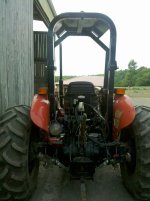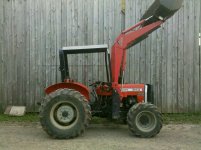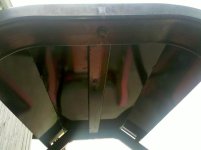I believe that a political action committe or similar beast is in order consider the devastating effects that roll off or fall off accidents result in. there are state organizations (NY & PA) that give rebates for ROPS installation but I can't convince them (YET) to include FOPS.
I mentioned that most ROPS (if available from manufacturer) can be had for less than $1000 and my quotes for manufacturing one was about $800. With my own materials and work, I could build one equivalent to OEM ROPS for $300 or less. This would be two vertical posts attached (detachable) from the verticals of the FEL with a center piece on top extending back to the ROPS. It would be nice to add a fiberglass canopy which would protect from dirt, gravel or stone injuries. I would be building mine now except for my injury and the need for surgery.
I mentioned that most ROPS (if available from manufacturer) can be had for less than $1000 and my quotes for manufacturing one was about $800. With my own materials and work, I could build one equivalent to OEM ROPS for $300 or less. This would be two vertical posts attached (detachable) from the verticals of the FEL with a center piece on top extending back to the ROPS. It would be nice to add a fiberglass canopy which would protect from dirt, gravel or stone injuries. I would be building mine now except for my injury and the need for surgery.


